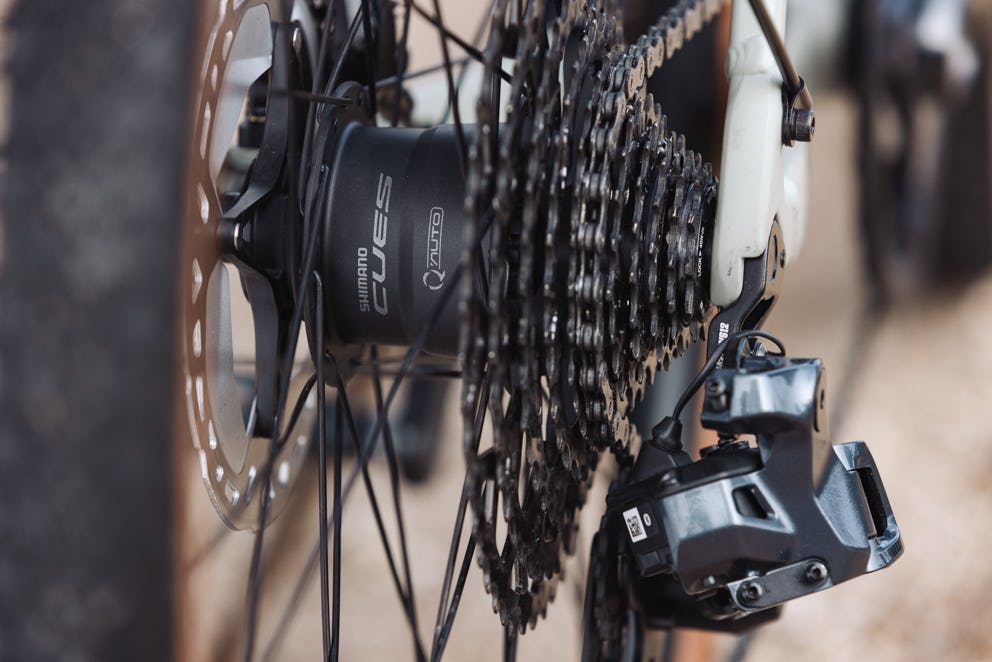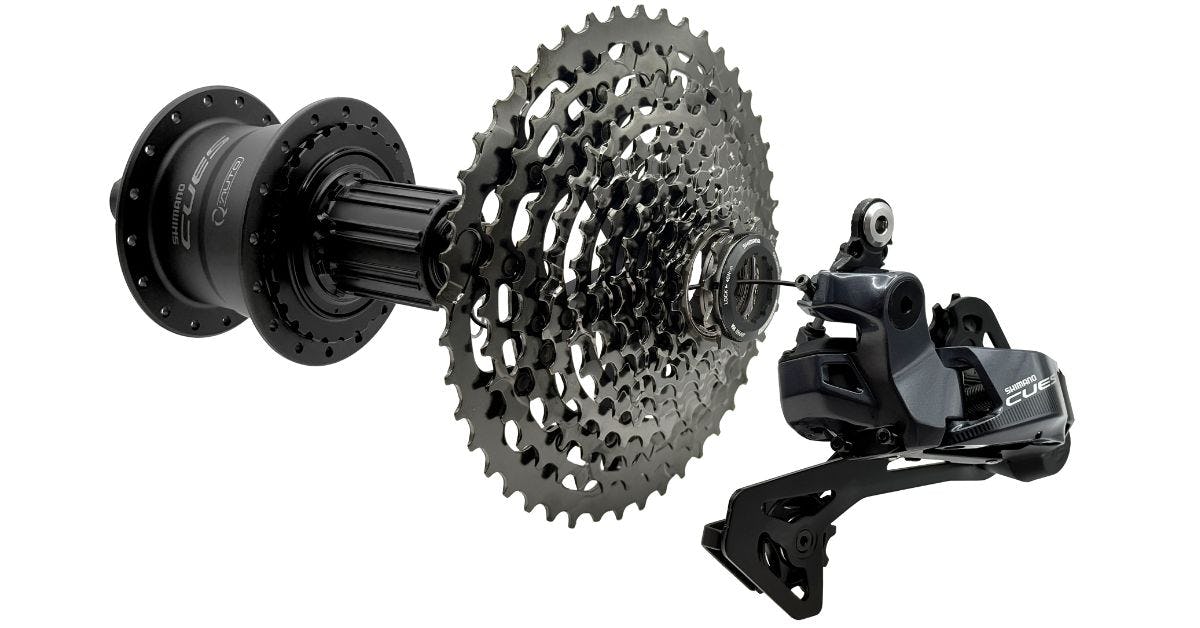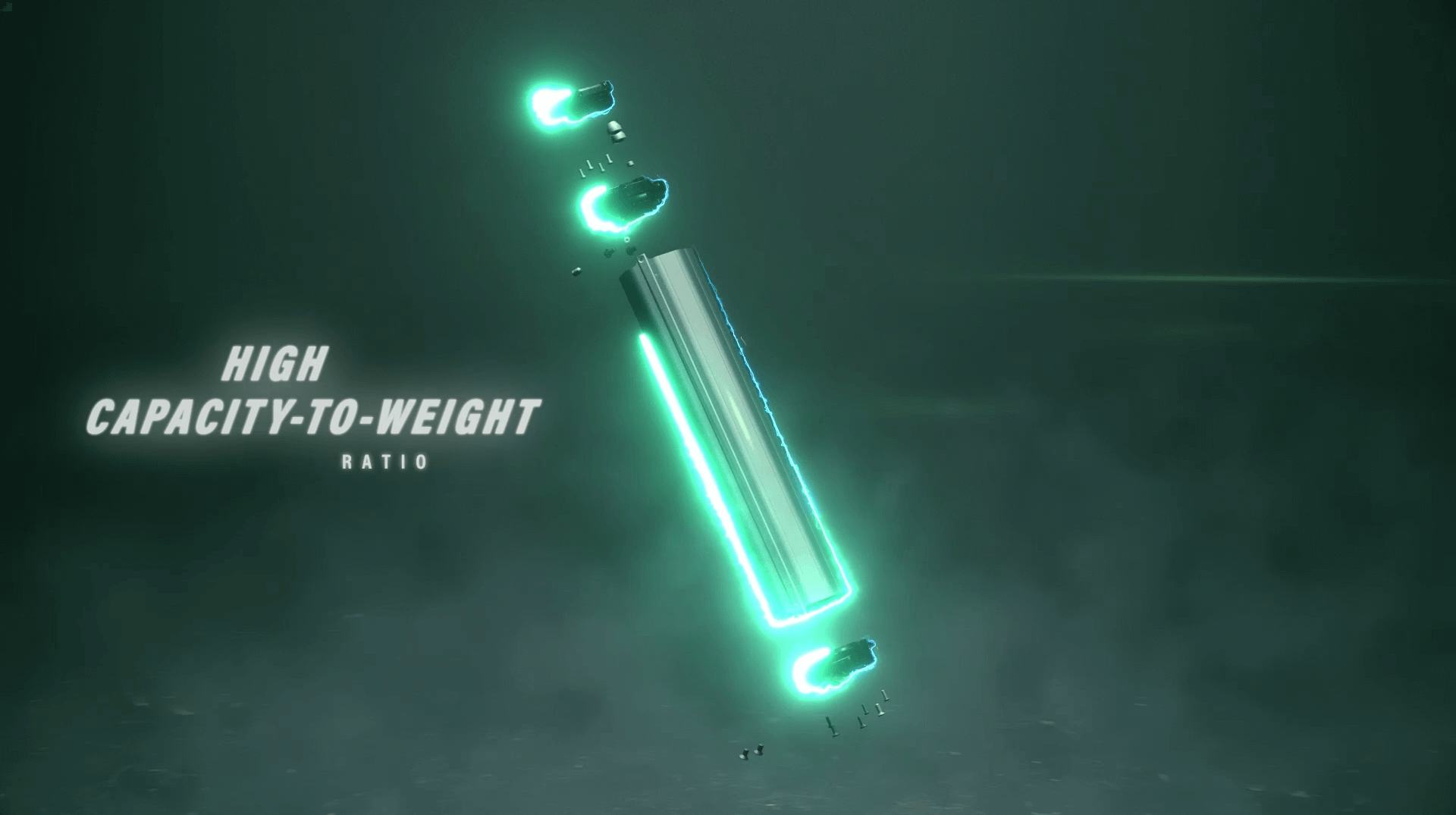This year at Eurobike in Frankfurt, Germany, Shimano is showcasing the brand-new Q’auto. With this innovation, the Japanese leader in bicycle components makes electronic shifting accessible to a broad audience. Previously, Shimano’s Di2 electronic shifting technology was available only for sports bikes and e-bikes. In contrast, Q’auto is intended for regular trekking, gravel, and city bikes – essentially, non-electric everyday bikes.
Power generation via the hub
The core of the system is Shimano’s new Cues FH-U6060 Freehub. This rear hub contains a compact dynamo that generates power during the ride. This energy is stored directly in a capacitor, ensuring the system operates even during short stops or at low speeds. According to Shimano, the technology can store power for up to a year, which is helpful for bikes that aren’t used that frequently. No need to worry about charging or replacing the battery.

Automatic and manual shifting
The rear hub also contains integrated sensors that measure speed, cadence, and slope during the ride. This information is sent wirelessly to the compatible Di2 rear derailleur, which automatically selects the appropriate gear. This eliminates the need for the rider to think about shifting, and it happens quickly and almost autonomously. Of course, manual shifting is still possible.
Smarter over time
A unique aspect of Q’auto is its self-learning capability. “Initially, the system uses general algorithms based on thousands of different riding conditions,” says Jonathan Davis, PR & communications manager at Shimano. “When the rider manually selects a gear using the shift switch, the system starts learning and adapts to future shifting moments. The more the system is used, the better it becomes at predicting the rider’s shifting preferences without any input from the user. As a result, the shifting experience becomes increasingly personalised.”
The more the system is used, the better it becomes at predicting the rider’s shifting preferences”
Always in the right gear
For the average rider, Q’auto offers a simpler, more streamlined experience. Commuters, casual riders, and others will always find themselves in the right gear when automatic shifting is enabled—whether climbing a hill or battling a headwind.
“Unlike cars, where the engine is consistent and 'always on', the engine of a bicycle is the rider. Therefore, the ideal automatic shifting pattern varies greatly from person to person. Even when it is the same rider, pedaling style can change depending on physical condition or mood. Through Adaptive Learning, the system understands these individual preferences and continuously evolves to become your ideal riding partner,” Davis adds.
No complexity
One of the biggest advantages of Q’auto is that it eliminates the need for battery maintenance. Riders don’t need to worry about charging, and there’s no risk of a dead battery. With no cables or displays on the handlebars, the bike remains sleek and minimalistic. With this product, Shimano is targeting the market between traditional bikes and e-bikes, appealing to tech-savvy consumers who want simplicity without added complexity.

A competitive edge for bike shops
For bike shops, the introduction of Q’auto offers an interesting commercial opportunity. In the first instance, the system opens up new upselling possibilities, because it can be integrated into trekking and city bikes. As a package, the system is expected to be available in the aftermarket, which allows customers to upgrade their existing bike.
“Retailers can now offer customers who are debating between a classic bike and an e-bike a third option: a smart bike without a motor, but still with comfort and automation. This distinction can help retailers stand out in a competitive market,” says Davis.
Reduced workshop load
Q’auto’s automatic shifting and smooth drivetrain handling also result in less wear on the chain and cogs, leading to fewer repairs, fewer warranty issues, and fewer return visits for shifting problems. At the same time, bike shops can maintain customer connections through software updates and periodic maintenance, positioning themselves as innovative service providers.
The first bikes with Q’auto
The installation of the system is straightforward. Compatible with Shimano’s Linkglide 10- and 11-speed cassettes, Q’auto doesn’t require complicated electrical wiring or separate batteries. Bicycle manufacturers can easily incorporate it into their existing models. The first bikes equipped with the system are already available and more are coming in the fall, including models from brands like Rose and Cube.
Designed for everyday cyclists
The introduction of Q’auto aligns with Shimano’s strategy to make advanced technology accessible without compromising reliability. While the company has already established a strong presence with Di2 electronic groups for sports bikes and e-bikes, Q’auto brings that same level of technology to everyday cyclists. As Davis notes, “We’re catering to the growing demand for simplicity, ease of use, and low maintenance. And we're catering to the many different types of bicycles available in the market.”
This article is sponsored by Shimano.









